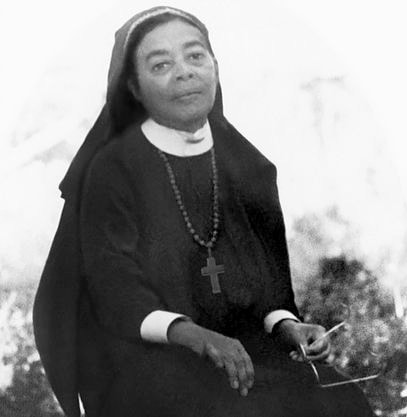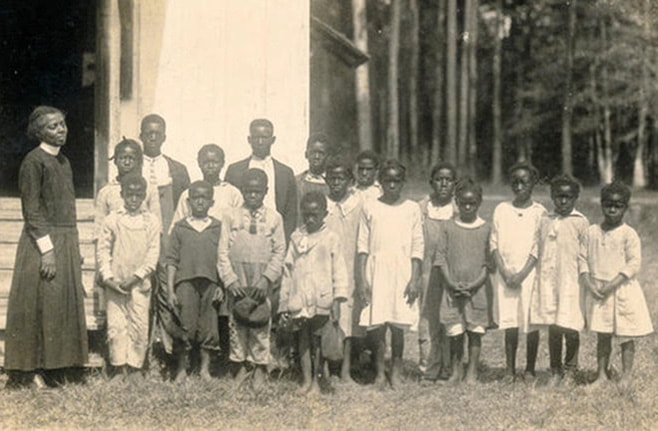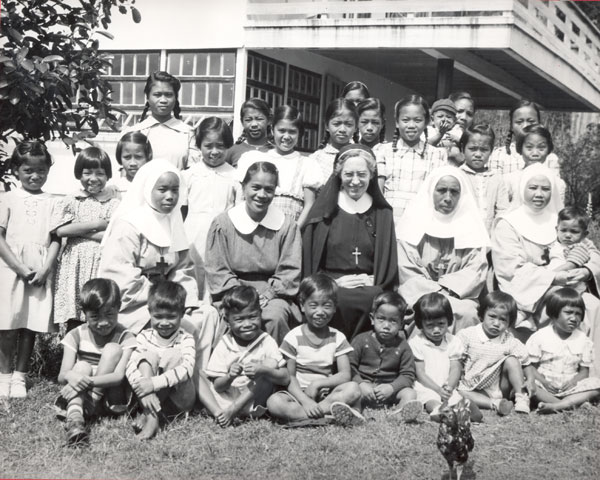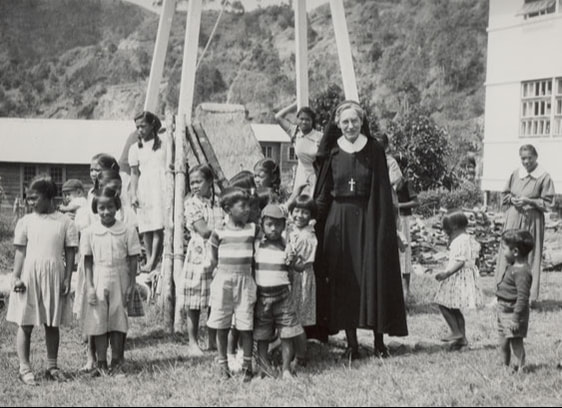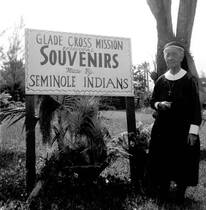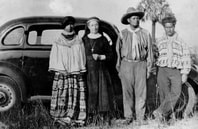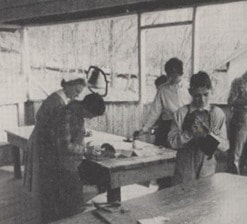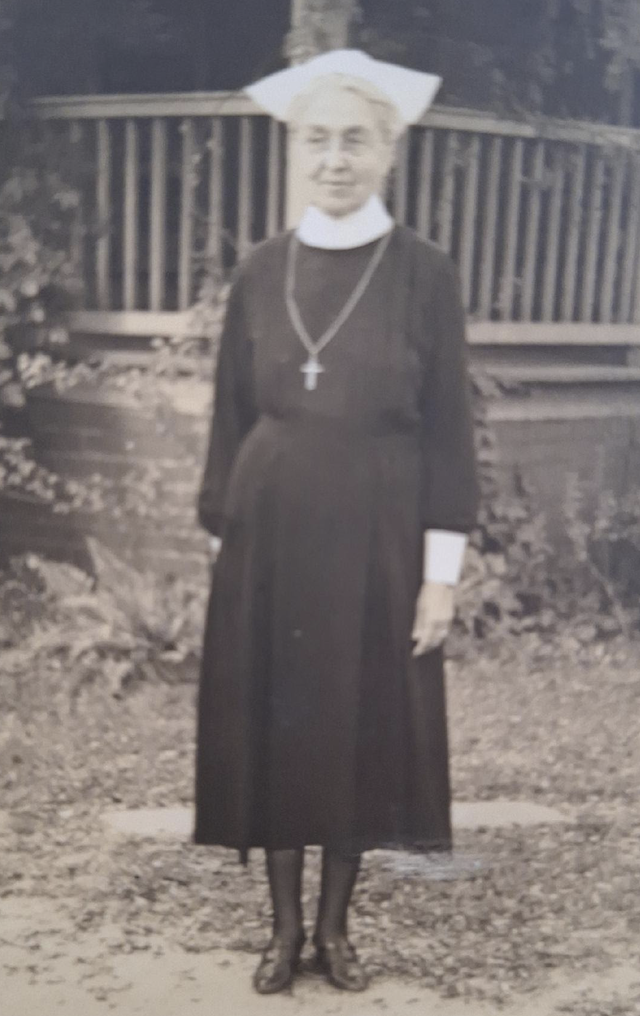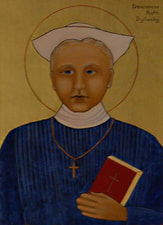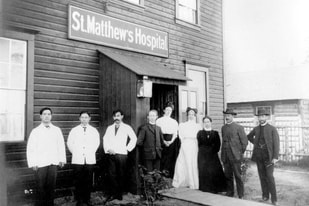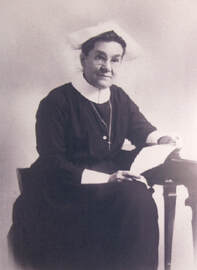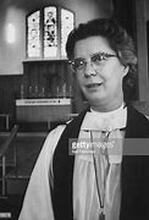Deaconesses A-F
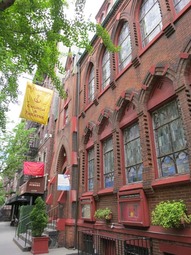 St. Clement's St. Clement's
Anna R. Armstrong was born on 31 January 1873 and was set apart as deaconess in 1908 by Bishop David H. Greer of New York, after graduation from the Training School at Grace Church. Anna spent the majority of her diaconal life in the diocese of New York. From 1909 until 1917 she served various churches in the Bronx including St. Martha’s and St. James in Fordham. After a brief tenure at St. Peter’s Church in Westchester, Anna settled into an eleven-year term at St. Clement’s Church located in Manhattan’s notorious Hell’s Kitchen neighborhood. While serving at St. Clement’s, Anna, who had a theatrical background, produced many plays and pageants. Due to failing health, Anna retired from active parish service in 1940 and became co-supervisor of St. Clare’s Home in Upper Red Hook, New York. She later retired to St. Anne’s Guest House and Convent in Kingston, where she died at the age of 87 on 29 August 1960. Her funeral was held at Christ Church, Red Hook. She is buried in the churchyard of St. John the Evangelist in Barrytown, along with several other deaconesses. [research of Deacon Geri Swanson]
Gertrude J. Baker was Set Apart in May 16, 1911 at the Cathedral of St. John the Divine, NY. View her certificate. She was Head of the Standing Rock Mission, Church of St. Elizabeth, South Dakota. She was also the principal of St. Elizabeth's School, Wakhala, South Dakota and later on staff of St. George's Church, Stuyvesant Square, NY. In 1930 she resigned and was married.
Anna Maynard Barbour was born in Mannsville, NY in 1854. After the death of her parents, she took a course in stenography. In March of 1893 she married W. James Barbour in St. Paul and Anna began her career writing mystery novels. Soon after her husband’s death in 1903, Anna began her studies at The Church Training Deaconesses Home in Philadelphia, graduating in 1908. She was set apart as deaconess by Bishop Ozi William Whitaker the following year. From there she was assigned to a post in Boston at The House of Mercy, institutions for "fallen women" that operated from the mid 19th to the mid 20th century. Read her full bio.
Presentation on Deaconess Harriet Bedell, by Deacon Tracie Middleton. Looks at Bedell's early deaconess training, her work at Whirlwind Mission in Oklahoma, Stevens Village in Alaska, in Allakaket, near the Arctic Circle, the Florida Everglades Seminole community, and more.
Charlotte Boyd was born in 1872. She was set apart as deaconess on 6 May 1901. Her primary ministry was to the St. Bartholomew Girls’ Club. She also was director of the summer home and farm St. Bartholomew’s sponsored in Pawling, New York. During World War I, Deaconess Boyd oversaw the work of St. Bartholomew’s Red Cross Chapter, dispensing 48,500 handwrapped surgical dressings and 1,659 hand-knitted garments to American troops in France and Belgium. When asked what part of her training was most influential in her life as a deaconess, Boyd replied: “To have known Dr. [William Reed] Huntington and to have felt his influence has been the greatest inspiration.” Boyd left St. Bartholomew’s in 1931 and, after a trip to England, took up her work at Ascension in Manhattan. She retired in 1957 after 56 years of active church work and died on 17 January 1965 in Quebec, Canada, where she lived with her sister. She was 92 at the time of her death. [research of Deacon Geri Swanson]
Blanche Henriques DeLeon, a graduate of St Faith’s/The New York School for Deaconesses, was originally from Washington, DC. Deaconess DeLeon served the congregation of St. Bartholomew's in Manhattan in the early years of the twentieth century. Later she left the Order of Deaconesses of her own volition, and entered the sisterhood known as the Order of St. Mary, where she took the name Sister Ignatia. She was named Sister Superior of the Trinity Mission House on Fulton Street, Manhattan, NYC in 1918.
Next: G-L
|
If you have information about these or other deaconesses, please, enlighten us! Contact our webmaster.
|
|
Thank you for visiting!
Your support enables The Fund for the Diaconate to provide financial assistance to Episcopal deacons, and those in diaconal formation, who have insufficient funds for their needs. All ordained Episcopal deacons are members of The Fund for the Diaconate by virtue of their ordination.
|
The Fund for the Diaconate of The Episcopal Church
Business Office P.O. Box 12621 Charlotte, NC 28220 (800) 281-5421 Legal Address 99 Wall Street #2815, New York, NY 10005 |

